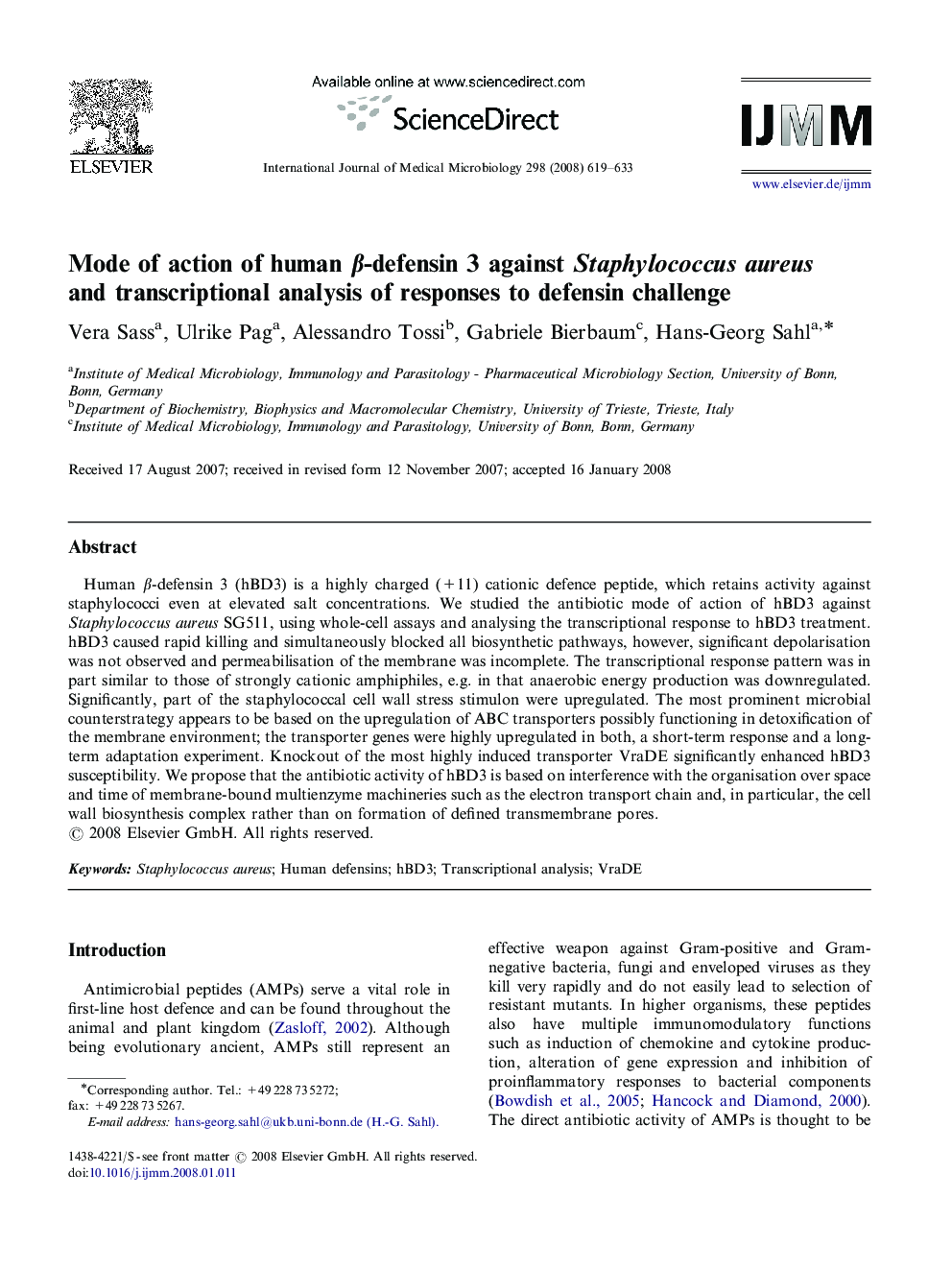| Article ID | Journal | Published Year | Pages | File Type |
|---|---|---|---|---|
| 2054322 | International Journal of Medical Microbiology | 2008 | 15 Pages |
Human β-defensin 3 (hBD3) is a highly charged (+11) cationic defence peptide, which retains activity against staphylococci even at elevated salt concentrations. We studied the antibiotic mode of action of hBD3 against Staphylococcus aureus SG511, using whole-cell assays and analysing the transcriptional response to hBD3 treatment. hBD3 caused rapid killing and simultaneously blocked all biosynthetic pathways, however, significant depolarisation was not observed and permeabilisation of the membrane was incomplete. The transcriptional response pattern was in part similar to those of strongly cationic amphiphiles, e.g. in that anaerobic energy production was downregulated. Significantly, part of the staphylococcal cell wall stress stimulon were upregulated. The most prominent microbial counterstrategy appears to be based on the upregulation of ABC transporters possibly functioning in detoxification of the membrane environment; the transporter genes were highly upregulated in both, a short-term response and a long-term adaptation experiment. Knockout of the most highly induced transporter VraDE significantly enhanced hBD3 susceptibility. We propose that the antibiotic activity of hBD3 is based on interference with the organisation over space and time of membrane-bound multienzyme machineries such as the electron transport chain and, in particular, the cell wall biosynthesis complex rather than on formation of defined transmembrane pores.
